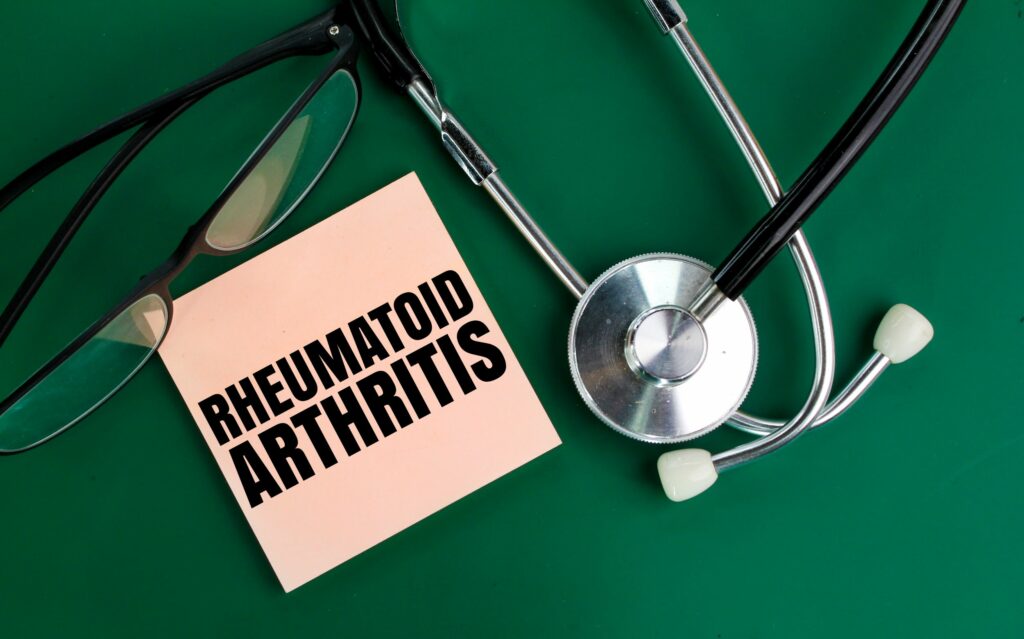
Rheumatoid arthritis (RA) is a chronic autoimmune disease characterized by inflammation and pain in the joints. While there’s no cure for RA, achieving remission—reduction or disappearance of symptoms—is a primary goal in its management.
The journey to remission requires a multifaceted approach, involving a combination of medical treatments, lifestyle adjustments, and regular monitoring. The effectiveness of a remission strategy often hinges on early diagnosis and the proactive management of symptoms.

To send RA into remission, patients typically work closely with healthcare providers to create a tailored treatment plan. This plan often includes a regimented course of medications, such as disease-modifying antirheumatic drugs (DMARDs), biologic agents, and anti-inflammatory medications.
Alongside pharmacological interventions, lifestyle modifications and home remedies play a pivotal role in managing the disease. Incorporating a balanced diet, regular exercise, and stress-reduction techniques helps to reinforce medical treatments and improve overall well-being.

Rheumatoid arthritis (RA) is a chronic inflammatory disorder that not only affects the joints but can also impact a variety of body systems. This multifaceted disease involves an abnormal immune response, leading to inflammation and pain.
In rheumatoid arthritis, the immune system erroneously attacks the body’s own tissue, primarily targeting the synovium—the lining of the joints. This autoimmune activity leads to chronic inflammation and can significantly contribute to the disease’s progression and severity.
Symptoms of RA may include joint pain, swelling, and stiffness, which can vary in disease activity. During periods of high disease activity, symptoms flare up, severely impacting daily life. Conversely, low disease activity or remission may result in few or no symptoms.
Over time, the persistent inflammation associated with RA can cause joint damage and progression of the disease. Erosion of cartilage and bone within the joint can lead to deformities, loss of function, and decreased quality of life. Early and aggressive treatment is crucial in slowing or halting this progression.

When managing rheumatoid arthritis (RA), establishing an effective treatment plan is crucial. Such a plan typically involves early intervention and the consultation of healthcare professionals to manage the disease proactively.
Initiating early and aggressive treatment for rheumatoid arthritis is recommended by experts such as the American College of Rheumatology. This approach often includes the use of biologic agents or disease-modifying antirheumatic drugs (DMARDs) with the goal of reducing or preventing joint damage, and possibly sending the disease into remission.
It’s important for patients to understand the benefits of starting treatment early to enhance the quality of life and minimize long-term complications.
Constant communication and collaboration with a team of healthcare professionals are key components of any successful treatment plan. The Arthritis Foundation emphasizes the importance of partnering with rheumatologists who can tailor a treatment plan to individual needs, monitor progress, and make necessary adjustments.
Additionally, healthcare providers can guide patients on self-management techniques to complement medical treatments, ensuring a comprehensive approach in the fight against RA.

Effective management of rheumatoid arthritis (RA) hinges on the use of medications and therapies tailored to individual patient needs. The goal is to reduce symptoms, prevent joint damage, and send the disease into remission. A combination of disease-modifying antirheumatic drugs (DMARDs), biologics, and corticosteroids is commonly employed to achieve these outcomes.
DMARDs are the cornerstone of RA treatment. They work by suppressing the immune response, thus preventing joint inflammation and damage. Methotrexate is often the first medication prescribed and may be used in combination with other DMARDs for a synergistic effect. Consistent use of DMARDs can lead to a significant reduction in symptoms and a higher chance of achieving remission.
Biologics are targeted therapies designed to interrupt specific pathways in the immune system. These medications, such as TNF inhibitors, work by neutralizing the proteins that cause joint inflammation. Biologics are often prescribed when patients have an inadequate response to traditional DMARDs.
Incorporating biologics into treatment plans has improved the outlook for patients, with many experiencing reduced symptoms and prolonged remission periods.
During acute flares, corticosteroids may be prescribed to provide rapid relief of inflammation and pain. These powerful anti-inflammatory drugs are effective but should be used sparingly due to potential side effects from long-term use. Administering corticosteroids can help control severe symptoms while adjustments to DMARDs or biologics take effect.

Maintaining a healthy lifestyle and employing home remedies can be beneficial adjuncts to medical treatment for individuals managing rheumatoid arthritis (RA). Focusing on diet and exercise can aid in reducing symptoms and may support efforts to achieve remission.
For individuals with RA, diet plays a crucial role in managing inflammation and overall health. A diet rich in anti-inflammatory foods such as fruits, vegetables, whole grains, and omega-3 fatty acids is recommended.
It’s crucial to limit the intake of processed foods and sugar, as they can exacerbate inflammation. There is also a link between obesity and increased RA symptoms, hence maintaining a healthy weight through diet can contribute to symptom relief.
Incorporating Living Your Yes! with RA involves taking proactive steps like adopting a balanced diet that sustains energy and reduces inflammation.
Regular exercise is beneficial to those with RA, not just for weight management, but for improving joint flexibility and strength. Low-impact exercises such as walking, swimming, or cycling are recommended to minimize stress on the joints. Moreover, engagement in physical activity can help alleviate stress, another exacerbating factor for RA symptoms.
Smoking is a known risk factor for developing RA and can also impede treatment effectiveness. Therefore, cessation is a key lifestyle change that can significantly improve health outcomes.

Managing rheumatoid arthritis (RA) effectively involves addressing both pain and inflammation to maintain quality of life. Strategies for alleviating discomfort range from established pain relief techniques to innovative treatments designed to reduce inflammation and prevent joint damage.
Individuals with RA often experience joint pain, stiffness, and tenderness, particularly in the hands, knees, and feet. To counteract these symptoms, one can employ several pain relief methods:
As RA research progresses, new therapies continue to surface, potentially transforming the management of arthritis-related symptoms:
Implementing a combination of these techniques may markedly improve the management of pain and inflammation in rheumatoid arthritis, thus enhancing an individual’s overall well-being and ability to perform daily activities.

In managing rheumatoid arthritis (RA), monitoring and testing are vital for tracking disease progress and informing treatment adjustments. Regular assessments help to identify flares or relapses early and evaluate the effectiveness of treatment strategies.
Patients with rheumatoid arthritis should monitor their symptoms, including joint pain and morning stiffness, to help gauge disease activity. Clinical tools like the Simplified Disease Activity Index (SDAI) can quantify this progress. Rheumatologists often record these assessments at each visit to detect any changes that may indicate a flare or relapse, aiding in early diagnosis and timely intervention.
Blood tests play a significant role in diagnosing inflammatory arthritis and monitoring its course. C-reactive protein (CRP) levels, a key marker of inflammation, are frequently checked as they can reflect active inflammation within the body.
These tests, when evaluated alongside clinical assessments, empower rheumatologists to tailor treatments and strive for remission.

Achieving and maintaining remission in rheumatoid arthritis (RA) is a desirable goal, as it implies the absence or minimal presence of disease activity. Effective management strategies are crucial for both attaining and sustaining remission or low disease activity levels.
Remission in RA is classified by the absence of ongoing inflammatory activity. This state is characterized by either no clinical signs or the presence of very mild symptoms. Sustained remission goes further, indicating a long-term period where symptoms are almost undetectable.
Lasting remission implies that the patient maintains a symptom-free state for an extended period without the need for continuous therapy. Low disease activity levels suggest minimal active disease, which is a step towards achieving remission.
Several factors contribute to achieving drug-free remission in RA patients. Early and aggressive treatment is often critical; initiating therapy promptly can lead to more dramatic improvements and a higher chance of remission.
Therapy typically involves disease-modifying antirheumatic drugs (DMARDs), and biologic agents play a pivotal role. Over time, with sustained remission, some patients may taper off medication, closely monitored by their healthcare provider to manage potential flare-ups.
Understanding the interplay between these factors and individual circumstances helps in navigating towards a life with minimal RA impact.
In this section, we address commonly asked questions about the remission of rheumatoid arthritis, offering insights into duration, dietary considerations, and the criteria for remission.

Remission periods in rheumatoid arthritis (RA) can vary greatly, with some patients experiencing remission for months or even years. The duration is highly individual and can be influenced by treatment effectiveness and adherence.
Dietary changes that may help in achieving remission include adopting an anti-inflammatory diet rich in fruits, vegetables, and omega-3 fatty acids, and reducing consumption of processed foods and sugars.
It is uncommon for RA to enter remission without treatment. Early and aggressive treatment is generally necessary to increase the chances of remission and to prevent joint damage.
The recognized criteria for RA remission typically include the absence of joint pain and swelling, low levels of systemic inflammation, as reported by laboratory tests, and improved function.
To prevent RA from progressing, it is important to follow prescribed treatment plans, engage in regular moderate exercise, maintain a healthy weight, and avoid smoking.
The stages of rheumatoid arthritis range from early, where symptoms may be mild, to severe, characterized by significant joint damage and disability. Early intervention is crucial to mitigate the risk of progression and deterioration.
For more information on our Copper Infused Compression Sleeves, Click Here!